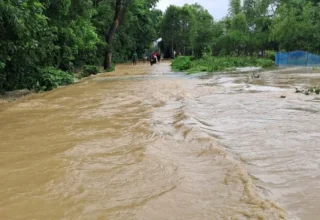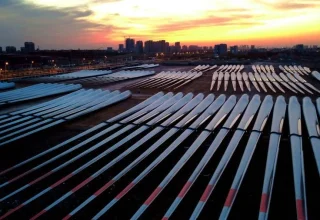
Punjab’s devastating super flood has engulfed 28 districts, affecting over 4.5 million people and submerging thousands of villages, according to PDMA DG Irfan Ali Kathia.
Speaking at a press conference in Bahawalpur on Saturday morning, Kathia said this was the largest rescue operation in the province’s history.
Punjab flood: Millions displaced, hundreds of villages submerged
Kathia confirmed that 4,744 villages were under water, with nearly 2.527 million people evacuated to safer places. A total of 2.019 million animals were also shifted. Tragically, 101 people have died, nine were injured, and two remain under treatment due to the floods.
He added that in some places, evacuations were resisted, forcing authorities to take strict action to save lives. “We faced challenges due to people’s unwillingness to evacuate, but had to prioritise safety. There were some accidents in south Punjab, which are being looked into,” Kathia said, adding that people in large numbers were evacuated in Jalalpur Pirwala.
Water levels across rivers and barrages
The PDMA DG detailed the water levels, noting 83,000 cusecs at Ganda Singh Wala, 82,000 cusecs at Head Islam, and 92,000 cusecs at Mailsi Siphon. He predicted the flow would decrease in the next 24 hours.
Water is now rising rapidly at Guddu Barrage, which is expected to receive 750,000 cusecs by tomorrow evening, pushing the flood into Sindh. For two months, the Sutlej River has remained in high flood, and the Ravi and Chenab rivers badly affected Multan.
Kathia clarified that Jalalpur Pirwala and Shujaabad were safe from immediate threat.
Relief and rescue efforts
Kathia called it the “biggest rescue operation in Punjab’s history,” with five helicopters deployed in Rahim Yar Khan and Jalalpur Pirwala for relief services. Despite the scale of the disaster, he noted some positive signs, with people beginning to return home in parts of upper Punjab. However, he warned that the number of victims in south Punjab could rise as waters spread.
Human tragedy in flood-hit areas
Residents in Chachran Sharif on the Indus River in Khanpur, where the water level has risen significantly, remain trapped with their livestock, waiting for rescue. Several settlements in Basti Pahoran, Echchan, Mid Adil, and Mauza Bakhrani are submerged, while families in Basti Noorai are still stranded in their homes.
Residents have demanded urgent relocation to safer places, but the administration has yet to reach many of the affected communities.
Climate change and future warnings
Reflecting on the disaster, Kathia said this year’s flood at Head Qadirabad was more dangerous than the one in 1955. He urged the nation to recognize climate change as a driving factor behind extreme floods and to address widespread encroachments along river crossings.
He revealed that Rs51 billion had been given in compensation for damages in the last 14 years, and Punjab’s chief minister is preparing an even larger package to support those who lost houses, farmland, and livestock. “All losses will be compensated,” Kathia assured.
He also warned of the possibility of an even bigger flood next year if climate change and river encroachments are not addressed.































